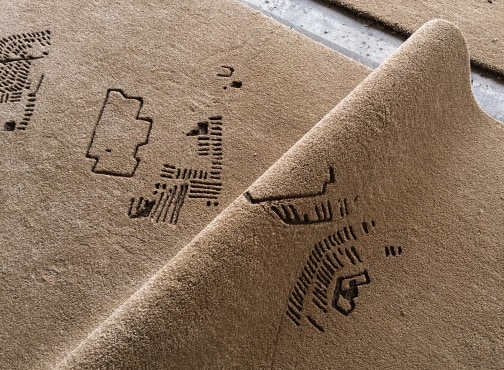
Green Art Gallery presents 1497, a group exhibition curated by Lantian Xie, featuring works by Hera Büyüktaşçıyan, Gitanjali Dang,Khanabadosh, Shilpa Gupta, Raja’a Khalid, Jacob Lawrence, Matheus Rocha Pitta, UBIK, Deepak Unnikrishnan, and Danh Vo.
The four-number sequence that makes up the exhibition’s name refers variously to:
1. The number of a hotel room.
2. The street address of someone’s house.
3. A year in history, in which Europeans first arrived by sea into two different gulfs.
Here, images, scents, texts, and objects allude to a home in which history has taken place, amidst roofs on fire, a greenhouse filled with tropical plants, an orphaned balcony, scattered threads, a soup made from stone, and chapters pulled from books not yet written.
1497 is configured as a set in which intimations of homeliness are also stagings and props that pretend to describe determinable trajectories. Instead, these intimations are incomplete, or led awry, evoking ellipses, truncations, and shifts in hand and position. They feign familiarity—for homes, lands, places to be remembered or longed for—whilst in turn betraying their own constructedness, distance, and impossible heaviness, feeling somehow adrift. Like that Borges story about the nation of cartographers who try to draw a comprehensive map of their empire, only to end up with a map so vast and detailed that it turns out to be the exact size of the empire itself, and thereby useless, and left to ruin. Here too is an implication of bodies—of residents, long-timers, locals, as well as tourists, guests, strangers, and colonizers—and how differently the same house is conjured by each, and also for whom a house is intended or not intended at any given time.
Elsewhere, Thani Al-Suwaidi describes another familiar kind of building in The Diesel:
“Eventually our dilapidated house began to turn into a city, and my father announced that our home was his cell. From chaos and wrath he forged a foundation stronger than a boulder’s. So it grew gradually; adding walls, windows, and doors.”
Elsewhere still, a friend remarked the other day that in her cosmopolitan city, the roads seem to reconfigure every day, and so each day she finds a different way home.